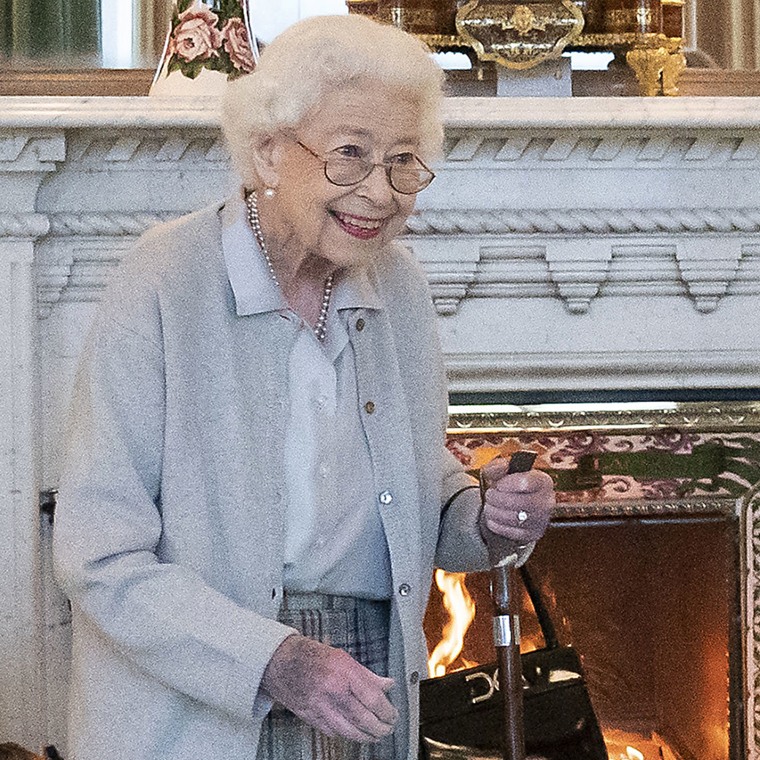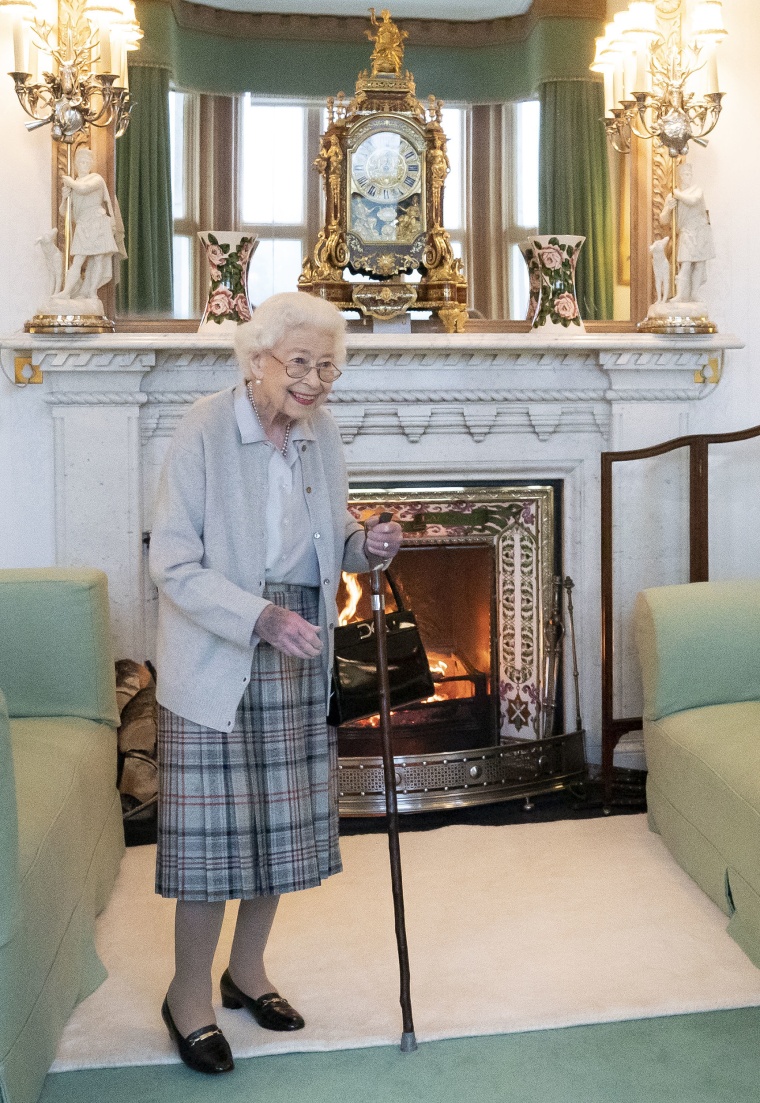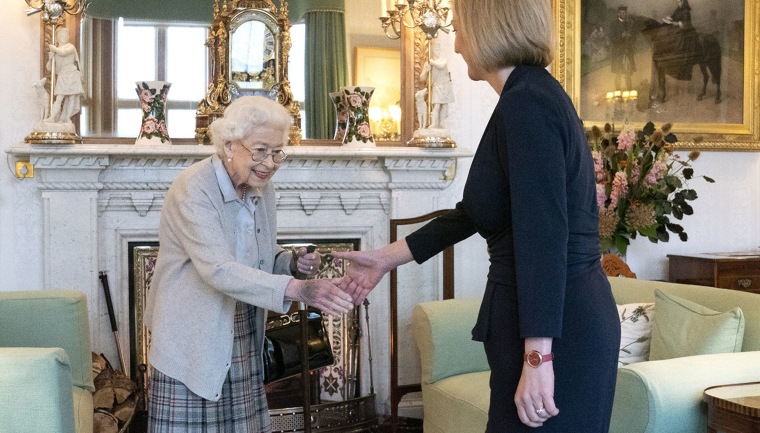Before her death, Britain's Queen Elizabeth II was last seen in public on Tuesday, Sept. 6., when she greeted politician Liz Truss at Balmoral, her castle in Scotland, and appointed Truss as prime minister.
Such ceremonies traditionally take place at Buckingham Palace in London, but the 96-year-old queen remained at Balmoral due to mobility problems, NBC News reported.
Photos from the event caused some concern as Queen Elizabeth appeared frail and seemed to heavily rely on her cane.
Hand discoloration
Observers focused on the monarch's right hand, which appeared to be purple in color.
The skin discoloration looks like a bruise, said Dr. ML Stevenson, a dermatologist at NYU Langone.

That could be due to senile purpura, NBC News senior medical correspondent Dr. John Torres told TODAY via email.
"As we age, our skin and the connective tissues underneath become more fragile so even a minor bump can cause this type of bruising," he noted.
About 10% of elderly people have this condition, studies have found.
The preferred term for it now is solar purpura, as it typically occurs on the forearms and back of hands where the sun hits, but where the skin has gone unprotected from ultraviolet radiation over the years, said Dr. Adam Friedman, professor and chair of dermatology at George Washington School of Medicine and Health Sciences.
Doctors often also see this kind of bruising after patients have their blood drawn or an intravenous line inserted for fluid and hydration, added NBC News medical contributor Dr. Natalie Azar. It's common to see it on the back of the hand in someone older who’s had an IV needle placed, Torres said.
Cane use indoors
The queen's cane seemed to be her constant companion in the photos.

“A cane is used for extra support when someone is weaker and has balance issues and is at risk for a fall, but (it) can also be used if there is a lower extremity injury and the person needs to keep full pressure off of a given leg," Torres said.
"But going by the way the queen is holding the cane in one photo, it seems more like it’s being used for balance purposes.”
Use of a cane made sense given the monarch's advanced age, Azar noted. The queen also had two knee surgeries for torn cartilage, so it's very likely she had some osteoarthritis in both knees, she added.
The queen's health had been under close scrutiny in recent months. In October 2021, she was hospitalized overnight and was advised to change her lifestyle, including taking on fewer royal responsibilities and cutting out her evening nightcap. The following month, she developed a back sprain and missed an event in London.
In February 2022, she contracted COVID-19 and was barely seen in public until May. June marked her Platinum Jubilee celebration, where she attended a few events but had to miss several due to some discomfort she was experiencing.
More recently, she missed a beloved sporting event in Scotland last week, and less than 24 hours before her death, she had to cancel a meeting with her Privy Council, made up of her formal advisers.

